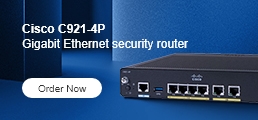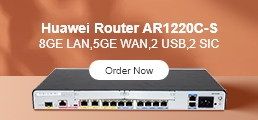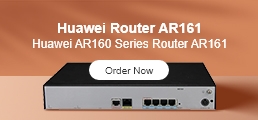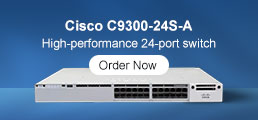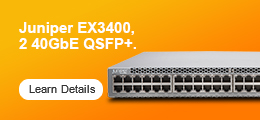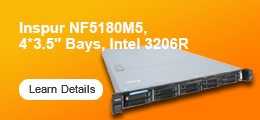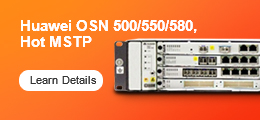Are you looking to improve data throughput, reduce CPU overhead, and enhance your network's efficiency? Jumbo frames may be the answer—but only if implemented correctly. In this guide, we explain what jumbo frames are, how they work, their advantages and risks, when to enable or avoid them, and how to configure jumbo frames on Cisco switches and common operating systems.
What Is a Jumbo Packet?
A jumbo packet, also known as a jumbo frame, refers to an Ethernet frame that exceeds the standard MTU of 1500 bytes. It is typically used to improve data transmission efficiency in high-performance networks.
The jumbo frame byte size commonly used is 9000 bytes, though the exact value must be supported and configured across all devices in the transmission path.
Variants
- Baby Jumbo Frame (around 1600 bytes): Used in scenarios like MPLS where extra headers are required.
- Super Jumbo Frame (over 9000 bytes): Found in research networks or advanced storage environments.
Benefits of Using Jumbo Frames
| Benefit | Description |
|---|---|
| Higher Throughput | Larger payloads reduce the number of packets and header overhead, improving bandwidth efficiency. |
| Reduced CPU Load | Fewer packets processed per second lightens the load on servers and switches. |
| Lower Latency | Especially beneficial in video editing, backup operations, or virtualized environments. |
| Improved Network Efficiency | Minimizes packet overhead and switch/router processing effort, resulting in smoother traffic flow. |
Example: Transferring a 1 GB file over a 1 Gbps link requires significantly fewer packets with jumbo frames compared to standard frames, completing the transfer faster with lower CPU usage.
Should Jumbo Frames Be Enabled?
Jumbo frames are not a one-size-fits-all solution. Their performance impact depends on consistency across the entire data path and the nature of your network traffic.
When to Enable Jumbo Frames
- High-bandwidth internal networks like SANs, HPC clusters, or virtualization environments.
- Controlled LANs or VLANs where all equipment supports and is configured for jumbo frames.
- Applications involving large file transfers or streaming workloads.
When Not to Use Jumbo Frames
- Internet-facing connections or WAN links where MTU fragmentation is likely.
- Mixed environments with legacy devices or inconsistent MTU support.
- Applications that use frequent small packets (e.g., VoIP, control signaling).
Downsides and Risks of Jumbo Frames
| Issue | Description |
| Packet Fragmentation | Frames may be fragmented or dropped if intermediate devices only support 1500-byte MTU. |
| Compatibility Problems | Some older devices or software stacks may not support jumbo frames or require manual configuration. |
| Increased Buffer Demands | Devices need larger buffer sizes to store and forward jumbo frames. |
| Troubleshooting Complexity | Diagnosing MTU mismatches and performance problems becomes more complicated. |
How to Configure Jumbo Frames
Step 1: Verify Hardware Compatibility
Ensure all routers, switches, NICs, and endpoints in the data path support jumbo frames. Mismatched MTU values cause performance degradation or packet loss.
Step 2: Choose an MTU Size
9000 bytes is a common value, but it must be uniformly applied across the entire path.
Step 3: Configuration Examples
Cisco IOS Example (e.g., Catalyst 9300, 9500)
! Set system-wide jumbo MTU (requires reload)
conf t
system mtu jumbo 9000
end
write memory
reload
! Or set at interface level
interface GigabitEthernet1/0/1
mtu 9000
Windows
- Open Device Manager → Network Adapter → Properties.
- Under the Advanced tab, locate Jumbo Frame or MTU.
- Set to 9000 bytes and restart if prompted.
macOS
- Open System Settings → Network → Details → Hardware.
- Set MTU to “Custom” and input 9000.
Linux
sudo ip link set dev eth0 mtu 9000
# To make persistent, update the interface configuration file
How to Test Jumbo Frame Support
Use the ping command with the "do not fragment" flag and a large payload to test end-to-end jumbo frame capability.
ping -f -l 8972 192.168.1.1Linux
ping -s 8972 -M do 192.168.1.1(9000 bytes MTU - 20 IP header - 8 ICMP header = 8972 bytes payload)
If the ping succeeds without fragmentation, jumbo frames are supported along the entire path.
Best Practices for Jumbo Frames
- Always ensure end-to-end MTU consistency across devices.
- Use jumbo frames in isolated VLANs or controlled environments, not across the public internet.
- Start with small segments for testing before network-wide deployment.
- Monitor traffic using tools like Wireshark, NetFlow, or iperf to verify gains and identify drops or mismatches.
Common Use Cases for Jumbo Frames
- Storage Area Networks (SANs)
- Virtual machine traffic in data centers
- High-performance computing (HPC)
- Video editing or media production workflows
- Large-scale backup and replication processes
Troubleshooting Jumbo Frame Issues
Common Issues
- Packet drops or failure to ping with large payloads
- Intermittent throughput issues
- Application timeouts or connection resets
Troubleshooting Tools
- Wireshark (filter for frame sizes)
- Cisco CLI:
show interface,show system mtu - Ping tests with fragmentation detection
- MTU path discovery utilities
Is Jumbo Frame Right for Your Network?
| Scenario | Recommendation |
| Internal LAN with full control over MTU settings | Yes |
| Traffic routed through Internet or VPN | No |
| Legacy devices in the path | No |
| Applications with large file transfers or backups | Yes |
| Unpredictable network paths or mixed hardware | No |
Conclusion
When used properly, jumbo frames can deliver major improvements in network performance, particularly in high-throughput, low-latency environments. However, they must be implemented carefully, with consistent MTU settings and compatible hardware throughout the network. For general enterprise or internet-facing traffic, the default 1500-byte MTU remains the most reliable choice.
For expert consultation or to find switches that support jumbo frames, explore enterprise-grade hardware at router-switch.com
FAQ: Jumbo Frames
Q1: Are jumbo frames faster than standard Ethernet frames?
They are not inherently faster, but they reduce overhead and improve throughput for large transfers.
Q2: What MTU should I use for jumbo frames?
9000 bytes is standard, but all devices must support this value.
Q3: Can I enable jumbo frames on just one segment?
Only if every device on that path (NICs, switches, routers) also supports jumbo frames. Otherwise, packets may be dropped or fragmented.
Q4: What happens if a jumbo frame reaches a device with a smaller MTU?
It may be fragmented or dropped, leading to poor performance or connectivity problems.
Q5: What is the purpose of using jumbo frames?
The primary purpose of using jumbo frames is to increase network efficiency by reducing protocol overhead. They allow larger payloads in each Ethernet frame, resulting in fewer packets for large data transfers, lower CPU utilization, and improved throughput—especially in storage, virtualization, and high-performance computing environments.




